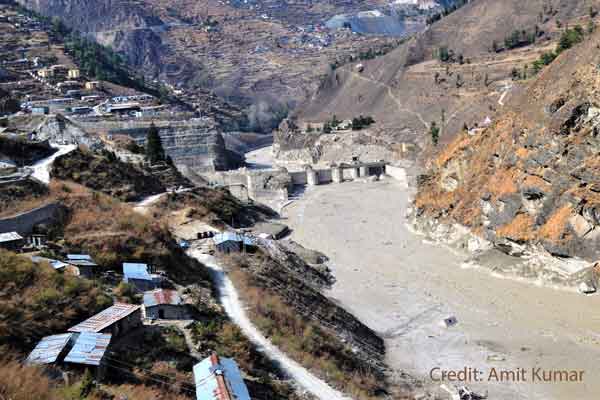News

University of Dayton geologist Umesh Haritashya worked with international coalition to publish findings of recent Himalayan disaster in Science
Research journal Science published the findings of an international coalition of scientists, which includes University of Dayton geologist Umesh Haritashya, that investigated the landslide and flood in India in February that destroyed two hydropower plants and left more than 200 dead or missing.
The study in Science published Friday, June 10, analyzed satellite imagery, seismic records and eyewitness videos. Haritashya examined before and after satellite pictures of the affected land and river basin for irregularities in the structure of the rock at the site. He also served as a remote liaison to scientists visiting the area.
Early indications in February pointed to a glacial lake outburst flood, but the high-resolution satellite images showed no nearby glacial lakes large enough to cause a flood, according to lead author Dan Shugar, associate professor in the University of Calgary's department of geoscience.
“High-resolution satellite imagery used as the disaster unfolded was critical to helping us understand the event in almost real time,” Shugar said. “We tracked a plume of dust and water to a conspicuous dark patch high on a steep slope. This was the source of a giant landslide that triggered the cascade of events, and caused immense death and destruction.”
The researchers are not clear on the direct link between climate change and this particular event but are sure climate change contributes to frequent mountain hazards in recent decades. The greater magnitude of the latest disaster is an argument to assess rapid developments in the area.
"Hazards don't always follow the pattern of past events," said Haritashya, whom The New York Times interviewed for two stories about the disaster. "This calculation and modeling allowed us to understand the critical combination of rock and ice mixture present in the failed mass that transformed it into a large and mobile debris flow."
"I hope policy- and decision-makers look at this study and think about disaster governance and sustainable development in the Himalaya, and evaluate large hydropower structures in development."
In addition to this study, Haritashya and his research team at UD have secured more than $3 million in research grants, primarily from NASA, to examine climate change impact on high mountain glaciers.
For more information, contact Haritashya at uharitashya1@udayton.edu. For interviews, contact Shawn Robinson, associate director of news and communications, at srobinson1@udayton.edu.
